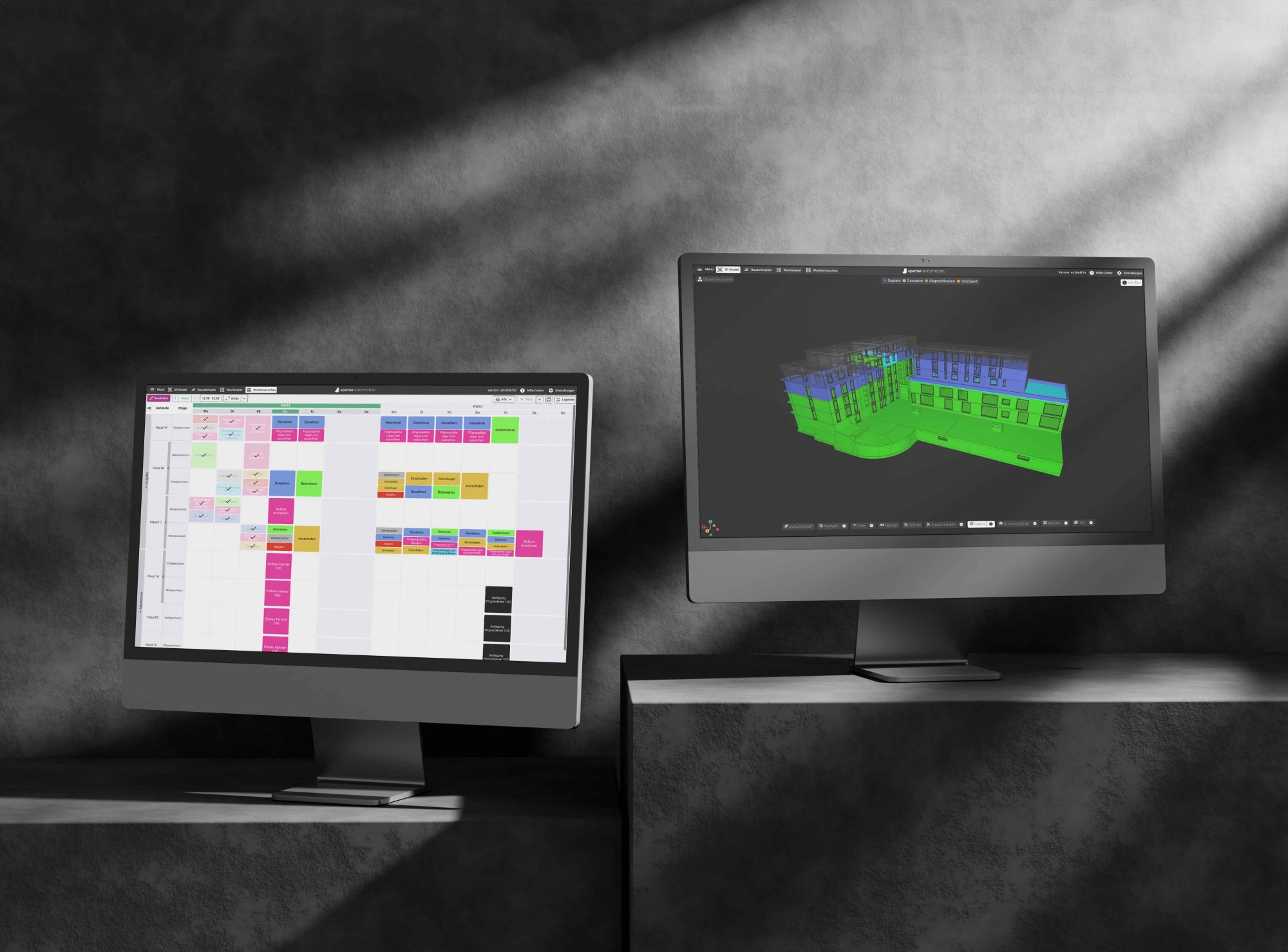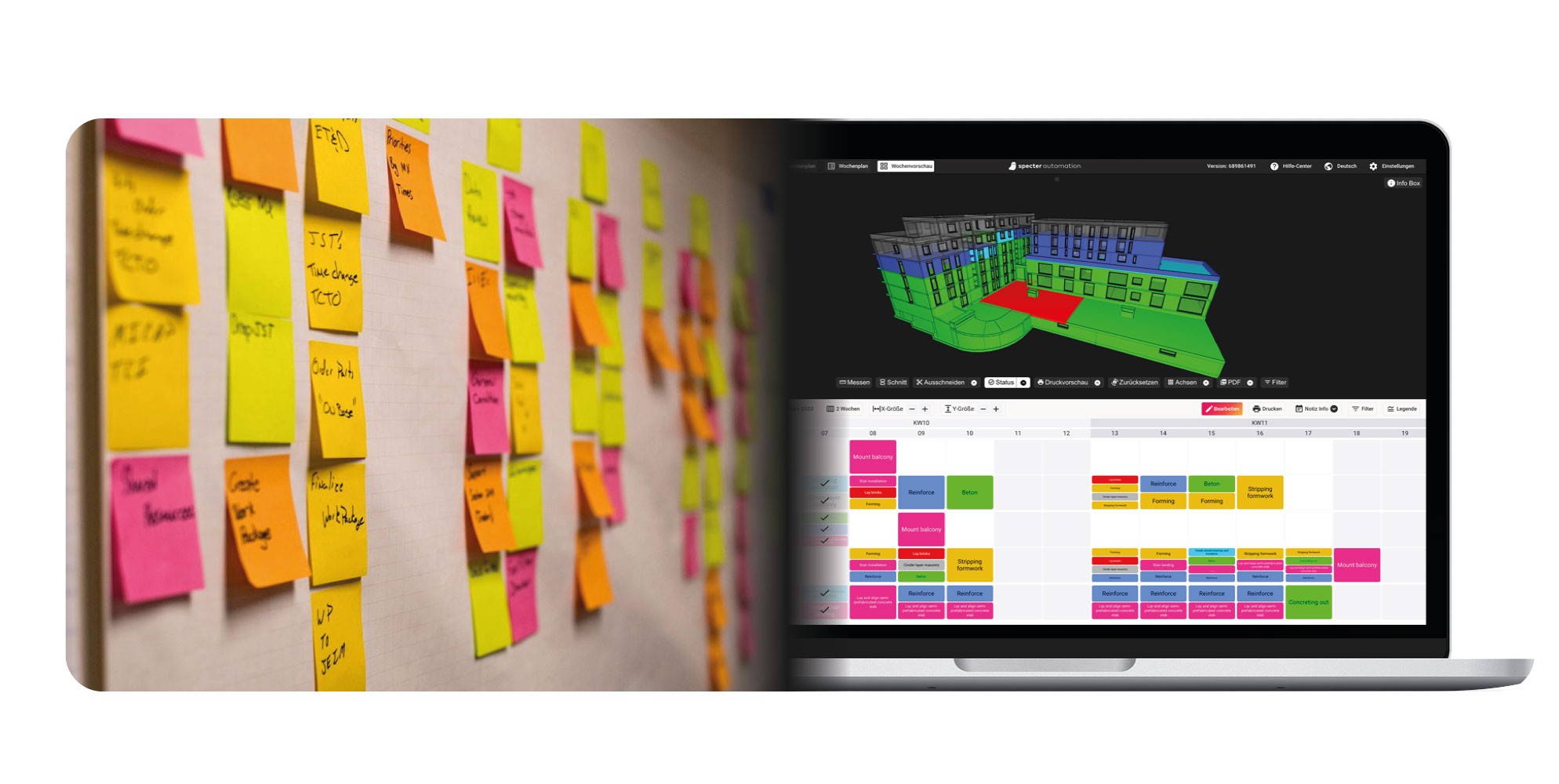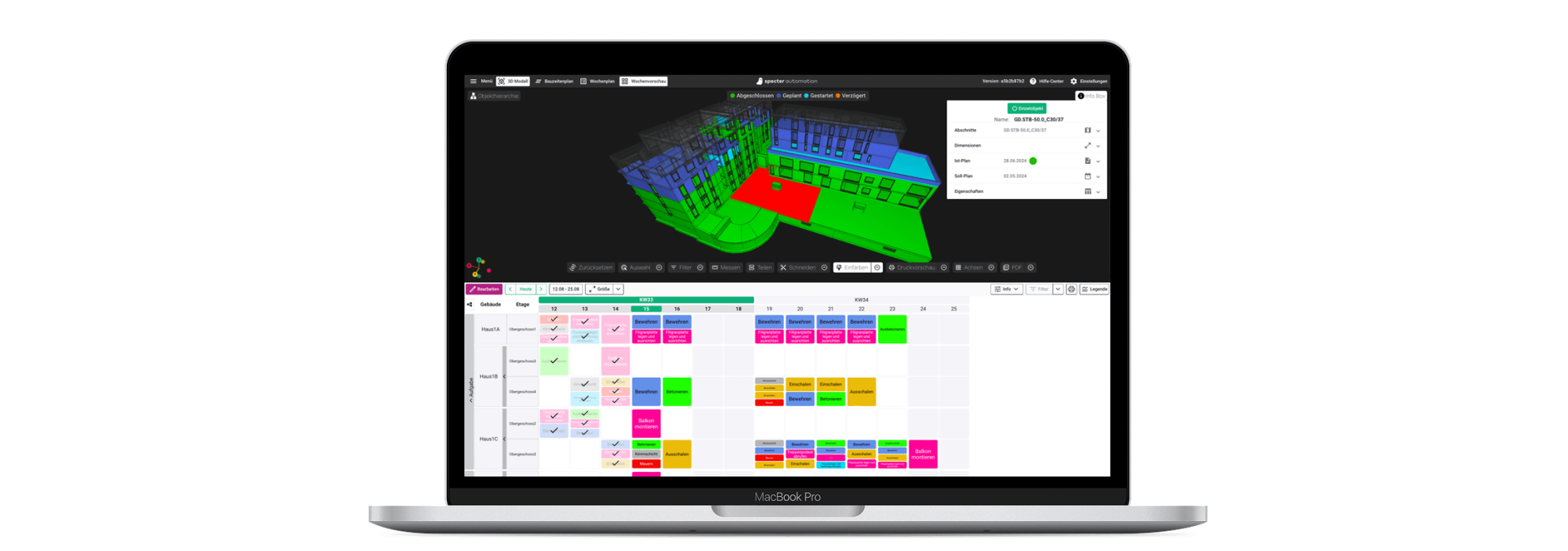The Last Planner System (LPS) is a project management method developed specifically for the construction industry. It was created by Glenn Ballard and Greg Howell in the 1980s and is based on the principles of lean construction. Don't worry: we'll go into the individual terms and establish a connection with construction site practice.
In its traditional form, LPS is based on regular, collaborative meetings where everyone involved - from site managers to subcontractors - come together to create and monitor realistic work schedules. Physical planning boards and logs are used to visualize tasks and responsibilities and document progress.
In the digital version of the Last Planner system, this planning and coordination is done using specialized software tools that make it possible to respond to changes in real time and improve communication across different teams. Digital construction software such as specter automation not only offers greater flexibility and accuracy, but also enables better traceability and analysis of project progress. This allows the LPS to be used even more effectively and resource-efficiently in complex construction projects.
In this article, we show exactly how LPS works, what it has to do with LEAN management and what advantages it offers for the construction industry.


